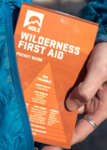https://combatmedical.com/shop/prod_march/prod_massivehemorrhage/prod_massivehem_itclamp/
Another option to add into a kit. Pretty much the best option imo to survive a groin femoral artery cut or anywhere you cant apply a tourniquet. The testing they did on these on pigs was pretty eye opening. https://www.ncbi.nlm.nih.gov/pmc/articles/PMC3786550/
cool tool. in the absence of the fancy tools it's best to learn how to pack a wound. 2 finger packing technique with some curlex/rolled gauze works well. only pack wounds with serious bleeding that can't be controlled by direct pressure.

